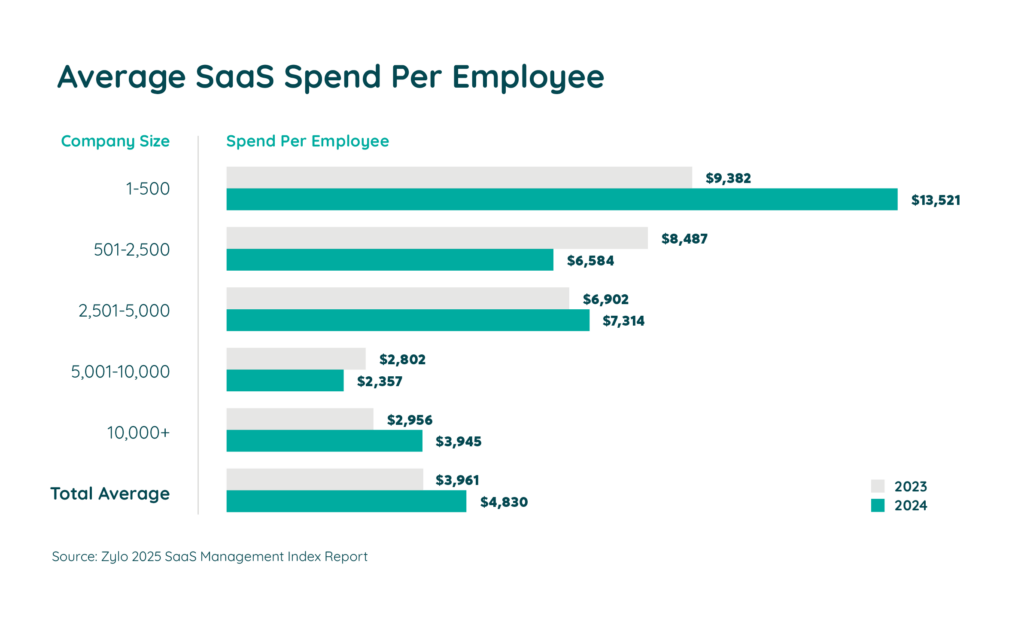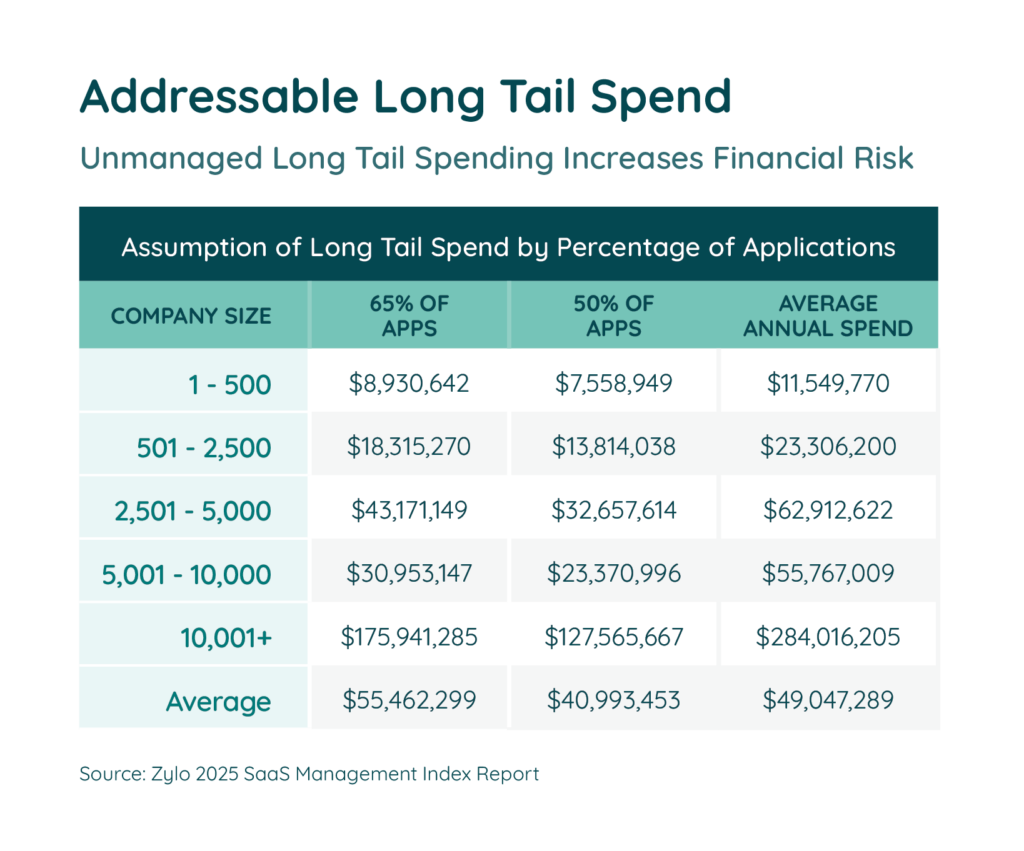05/28/2025
Table of Contents
As SaaS spending explodes—in some cases surpassing traditional cloud infrastructure—FinOps professionals are being asked to expand their focus beyond AWS, Azure, and GCP. But many still see SaaS as foreign, murky territory. How do you apply FinOps discipline to a category that plays by different rules?
To explore this shift, we spoke with three FinOps-certified experts at Zylo. Together, they bring a rare combination of SaaS Management and FinOps expertise, offering a frontline perspective on the convergence and what FinOps practitioners must know to stay ahead.
Meet the experts:

Enterprise Program Manager

Sr. Enterprise Account Executive

Sr. Solutions Consultant
Q: Let’s start with the big question: Why should FinOps teams even care about SaaS right now? What’s changed?
Battle: “It’s a natural evolution. If the goal of FinOps is to provide a holistic view of spend, you can’t do that without SaaS.”
Erdem: “SaaS is becoming a top-three line item, right up there with cloud and people.”
Erdem: “Finance and leadership are realizing it’s creeping up to match cloud spend, and that’s forcing the conversation. The FinOps Foundation is signaling the same thing: SaaS needs to be part of the FinOps model.”
Eicholtz: “Finance leaders are starting to realize the total cost of ownership per employee isn’t $1,000 or $2,000. It’s more like $4,000 or $5,000 when you factor in all the SaaS tools. The question is whether you’re seeing a return, and how to reinvest that spend into actual revenue-generating activities.”

Q: From a FinOps perspective, what makes SaaS different from cloud?
Eicholtz: “FinOps leaders are used to thinking in terms of unit economics and usage-based models, but SaaS licensing brings in all kinds of other factors: seat-based, consumption-based, envelope-based. There are a lot of metrics that don’t really exist in the traditional FinOps world.”
Battle: “There are three or four major vendors in cloud, and their billing and pricing is extremely complicated. But with SaaS, it’s hundreds of vendors, each with their own licensing model and way of classifying spend. The complexity is everywhere.”
Q: Even if SaaS is new territory, FinOps practitioners aren’t starting from scratch. What strengths do they bring to the table?
Erdem: “The goals of SaaS and cloud management are pretty similar. Both are about enabling collaboration and making sure spend is properly allocated. They may not be focused on shaving 10% off the bill right away, but they know how to build the steps that get you there.”
Eicholtz: “They understand the financial piece: unit economics, how to reinvest savings into revenue-generating initiatives. That mindset is very crucial to have in SaaS Management.”
The Definitive Guide to SaaS Management
Learn MoreQ: On the flip side, where do FinOps teams tend to struggle when it comes to managing SaaS? And where can Zylo make the biggest impact?
Battle: “When you’re a FinOps person, you’re used to working with three or four vendors that all fit into defined buckets. Then SaaS shows up, and suddenly you’re dealing with 500 vendors, each with their own way of classifying spend and licensing. That’s where Zylo can help level the playing field, so they can get that holistic FinOps view. What is this actually costing me? What’s the waste tied to this specific project? And how do I report that back to the CFO in a way that makes sense?”
Erdem: “What surprises many FinOps practitioners is how much spend is hiding in the long tail. They’ll see a $35,000 app and not think twice, until they realize they have 80 of them. Suddenly, it’s $3M they didn’t know about. That’s when their ears perk up. That’s also where Zylo comes in, helping rationalize duplicative apps and identifying candidates for cancellation.”

Eicholtz: “With cloud vendors like Microsoft and Google, FinOps teams can see the bills clearly. But SaaS is so disparate across large organizations, they often have no idea who owns what or who bought it.
Zylo pulls in the spend data and shows them: $5,000 here, $20,000 there, and suddenly it adds up to $300M.
The usual reaction is, ‘There’s no way that’s possible.’ But it is. That visibility alone shows just how big the problem really is.
Then comes the harder part: how to tackle it. With 300 app owners and 300 separate renewals, it’s not simple. Zylo gives you visibility and a clear path forward. We walk with you through the entire journey.”
Q: To wrap up, what’s the message FinOps leaders need to hear right now when it comes to SaaS?
Battle: “Research shows you’re probably wasting about 20% of your SaaS spend, on average. So if your whole job in FinOps has been focused on reducing waste in cloud spend, guess what? SaaS is an area you haven’t even touched yet. And it might be bigger.”
Eicholtz: “I’ve talked to leaders managing hundreds of millions in SaaS spend. If you can save even 10%, that’s tens of millions of dollars. That’s the difference between laying people off and being good stewards of the dollars being spent. FinOps helps drive that kind of conversation.”
Erdem: “The FinOps methodology has reached the C-suite’s ears. Maybe not even to save dollars, but to reallocate dollars, or know where the dollars are going, and to have accountability for it. That’s what’s different. SAM teams can’t push that, but FinOps can.”
Related Content from FinOps X 2025: How The Home Depot is Bringing SaaS into FinOps
Watch Zylo Co-Founder Ben Pippenger and Ridge Fussell of The Home Depot explore what it takes to manage SaaS with a FinOps mindset.
Adding SaaS to your FinOps practice? Request a demo to see how Zylo can provide visibility and control to optimize your SaaS spend.

